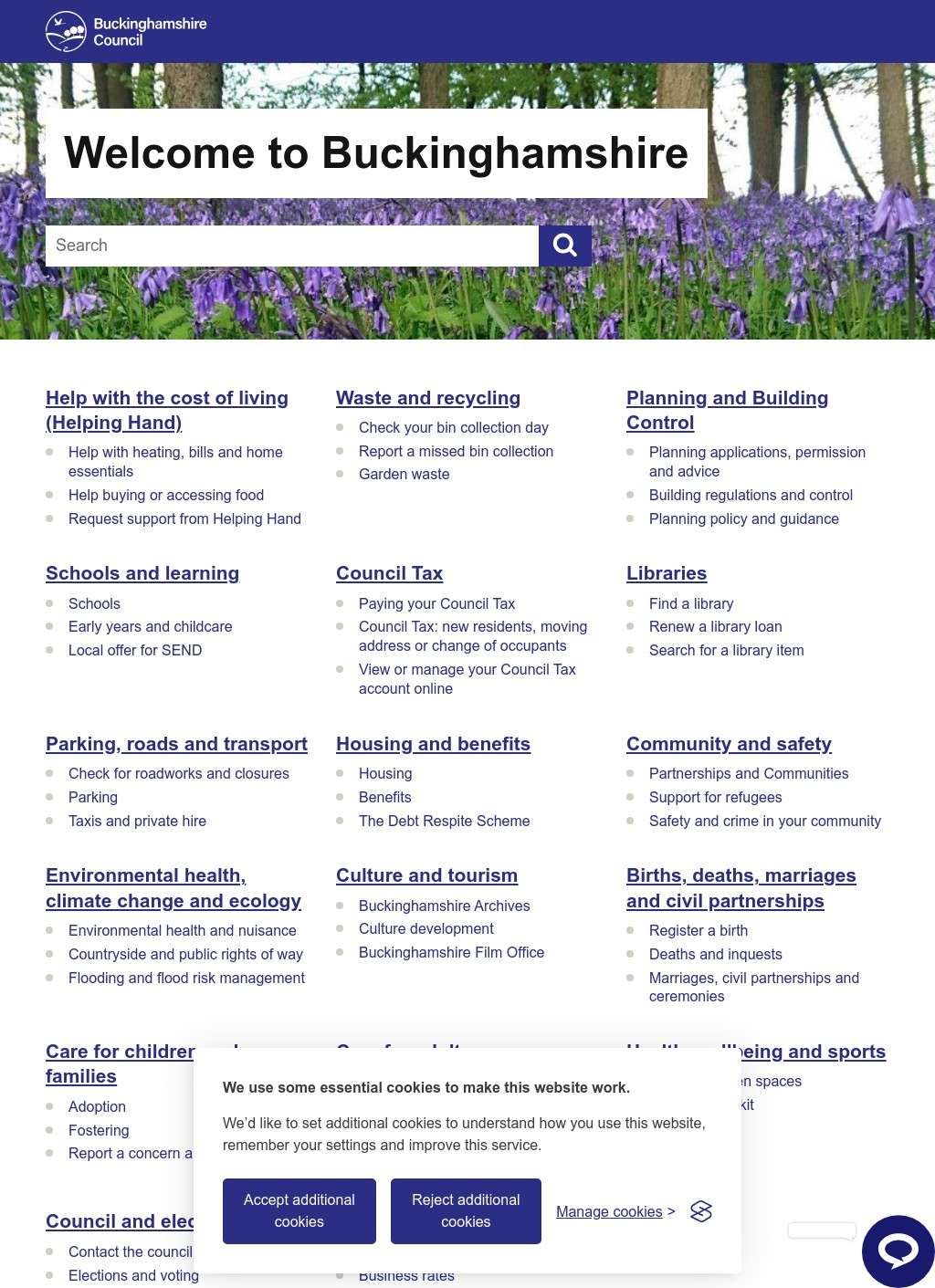Buckinghamshire Council emerged in April 2020 as a single unitary authority, replacing the former county council and four district councils of Aylesbury Vale, Chiltern, South Bucks, and Wycombe. This consolidation created one of England's largest unitary authorities, serving approximately 600,000 residents across a diverse landscape spanning rural villages to bustling market towns. Operating from multiple locations including The Gateway in Aylesbury and the historic County Hall, the council manages over 750 services that touch every aspect of daily life in the county.
The council's service portfolio encompasses education, social care, highways, planning, waste management, and libraries among many others. Educational responsibilities include maintaining standards across state schools while working with academies and further education providers. Adult and children's social services form a substantial part of operations, supporting vulnerable residents through dedicated teams. The authority manages an extensive road network, processes planning applications, and oversees environmental health standards across the county. These services operate through an integrated approach, reflecting the benefits of unitary status where previously separate district and county functions now work seamlessly together.
Digital transformation drives modern service delivery at Buckinghamshire Council. Their comprehensive online portal enables residents to report issues, pay council tax, apply for services, and access information round the clock. The "My Account" system provides personalized access to council services, streamlining interactions while reducing administrative burden. This digital-first approach complements traditional contact methods, ensuring accessibility for all demographics. ServiceNow IT Service Management has revolutionized internal operations, with over 75% of staff now using the self-service portal for IT support, demonstrating successful technology adoption across the organization.
Partnership working amplifies the council's effectiveness beyond its direct service provision. The "One IT" program exemplifies collaborative innovation, connecting Buckinghamshire Council with the local NHS Trust and Fire & Rescue Service through a unified network infrastructure. This £40 million investment, delivered with Cisco and BT, creates shared capabilities across 250 locations including council offices, schools, hospitals, and fire stations. Such integration enables staff from different organizations to work seamlessly from any location, improving service coordination while achieving significant cost efficiencies through shared procurement and resources.
Financial stewardship presents ongoing challenges typical of local government nationwide. The council manages a substantial budget funded through council tax, business rates, and government grants. Recent elections in May 2025 resulted in no overall control, ending decades of Conservative majority governance. This political shift brings new dynamics to decision-making processes. The council has undertaken significant property rationalization, planning to sell former district council buildings in Amersham and potentially the iconic New County Hall tower in Aylesbury, reflecting changing workplace patterns and financial pressures.
Community engagement remains central to the council's democratic mandate. Fostering services receive particular emphasis, with ongoing recruitment campaigns addressing the national shortage of foster carers. The council promotes various engagement opportunities through consultations on local plans and service changes. Regular events and information sessions keep residents informed about council activities. Committee meetings remain open to public attendance, maintaining transparency in governance despite the challenges of managing such a large geographic area with diverse community needs.
Economic development initiatives balance preserving Buckinghamshire's character with enabling growth and prosperity. The county's proximity to London creates both opportunities and pressures, with the council managing development to protect the Chiltern Hills Area of Outstanding Natural Beauty while accommodating housing needs. Business support programs help local enterprises thrive, recognizing the importance of a strong local economy for community wellbeing. Infrastructure investments, particularly in broadband and transport links, position Buckinghamshire for future success while maintaining its distinctive mix of rural heritage and modern vitality.
Looking forward, Buckinghamshire Council faces both opportunities and challenges inherent in managing such a large, diverse area. Climate change commitments require balancing environmental protection with development needs. Demographic shifts, particularly an aging population, demand evolving service models. Yet the council's scale enables strategic thinking and resource deployment impossible under the previous fragmented structure. Through continued digital innovation, strategic partnerships, and responsive governance, Buckinghamshire Council works to fulfill its mission of improving lives across this historic county while preparing communities for future challenges and opportunities.
